ako funguje mazanie stratového Ariela
Ako funguje mazanie stratového Ariela
How the total loss lubrication works on Ariel motorcycle
Každý, kto sa niekedy pustil do renovácie motocykla vie, že jednou z najdôležitejších súčastí motora je kľukový hriadeľ. Správna funkčnosť a hlavne životnosť závisí od mnohých faktorov. Najhlavnejšia je však správna funkcia mazania. Obzvlášť u modelu so stratovým mazaním. Ku kľukovému hriadeľu sa dostáva nový olej v malých dávkach prostredníctvom úzkych kanálov a samotné mazanie často zabezpečuje iba rozprášená hmlovina od zotrvačníkov. Pri renovácii je teda potrebné, skontrolovať cestu oleja od čerpadla až k odfuku, kadiaľ sa motor zbavuje prebytočného maziva. Vstupný kanál do karterov väčšinou nebýva poškodený. Snáď len zanesený usadeninami. Je potrebné skontrolovať jeho funkčnosť stlačeným vzduchom či tenkým drôtom. V prípade, že je na motore potrebné meniť púzdro zo strany pŕs, po vylisovaní púzdra sa mazací kanál odhalí skoro celý. Malá polguľatá štrbina okolo púzdra ústi priamo pri otvore na kľukovom hriadeli, cez ktorý sa olej dostáva priamo k valčekovému ložisku.
Everyone who ever decided to restore a motorcycle knows, that one of the most important parts of an engine is the crankshaft. The correct function and most of all the lifespan of it depends on many factors but the most important is the lubrication. Especially on models with a total loss lubrication system. The new oil gets to the crankshaft in small doses by narrow channels and the lubrication itself is often provided by an oily mist sprayed from the flywheels. During a restoration it is necessary to check the oil ways from the pump up to the blow-by where the surplus oil is disposed from the engine. Usually the crankcase oil inlet channel is not damaged. Maybe just clogged with sediment. It is necessary to check its function by compressed air or a thin wire. When the replacement of the slide casing is needed, after the removal of the casing from the crankcase the lubricating channel will be almost fully exposed. Small half circle slot around the casing is placed right next to the hole in the crankshaft through which the oil gets directly to the roller bearing.
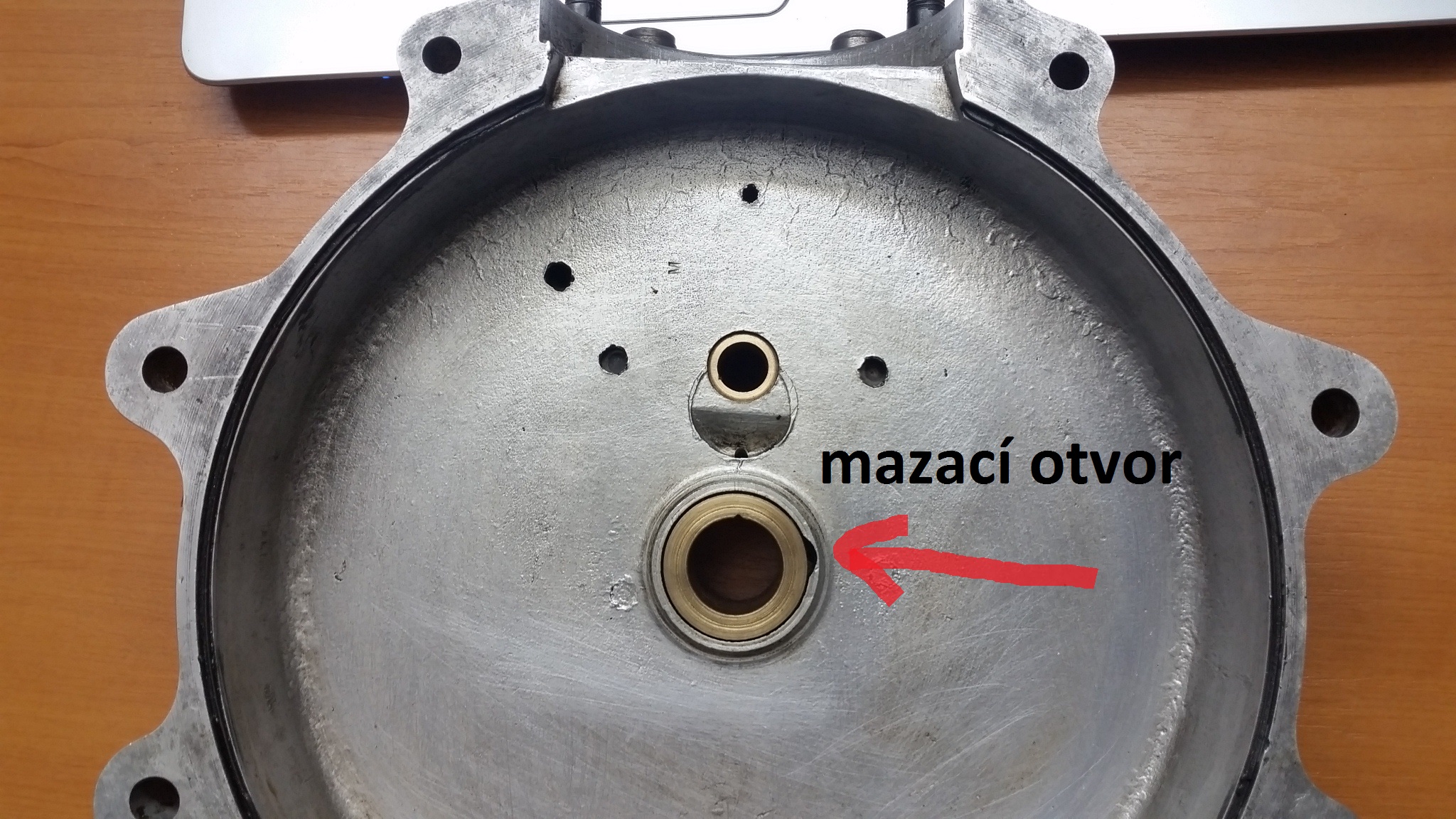
Mazací otvor v kľuke je navŕtaný pod uhlom a proti smeru otáčania kľuky. Žliabok na vstupnej strane zabezpečuje sústredenie oleja na okraj a odstredivá sila tlačí olej cez kanálik priamo k valčekom. Často sa však stáva, že práve tento šikmo navŕtaný otvor býva zanesený čiernou, vazelinovou hmotou. Niečím podobným ako mäkký karbón. Preto, že je otvor navŕtaný pod uhlom a protismeru otáčania, chová sa ako čerpadlo a odstredivá sila tlačí dostatok oleja. Keď je však otvor zanesený, motor je mazaný už len hmlovinou od zotrvačníkov, čo má obrovský vplyv na životnosť kľuky a celého motora.
The oiling hole in the crankshaft is drilled under an angle and opposite to the direction of crankshaft spinning. The groove on the inlet side ensures that the oil concentrates on the edge and the centrifugal force pushes the oil through the channel directly to the rollers. It happens very often that the drilled hole in the crankshaft is clogged with black greasy substance. Something similar to soft carbon. Thanks to a fact that the hole is drilled under an angle and in an opposite direction of the crankshaft movement it acts just like a pump and the centrifugal force supplies a sufficient amount of oil. But if the hole is clogged, the engine is lubricated only by the oily mist rising from the flywheels what effects the lifespan of the crankshaft and the engine.
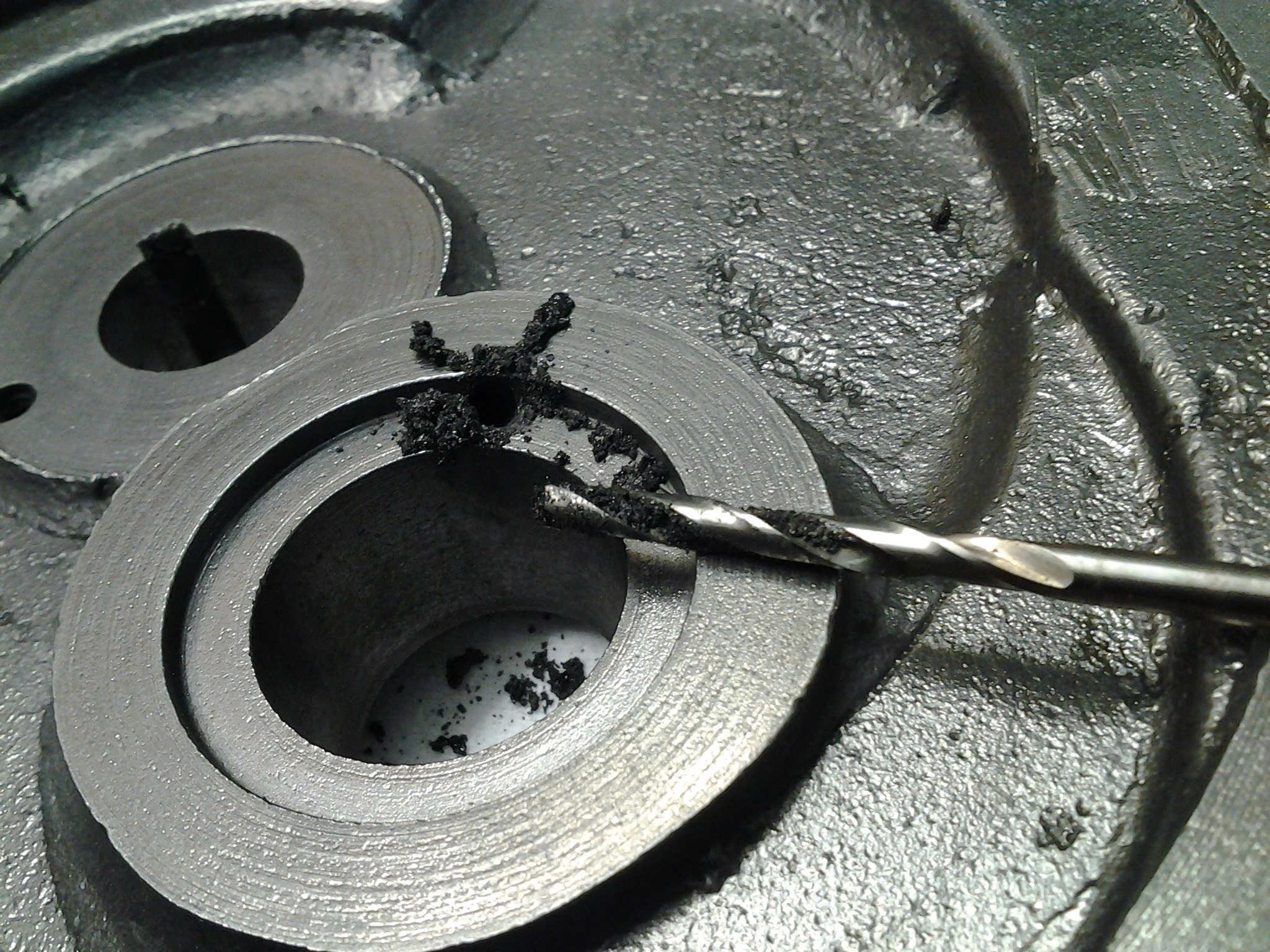
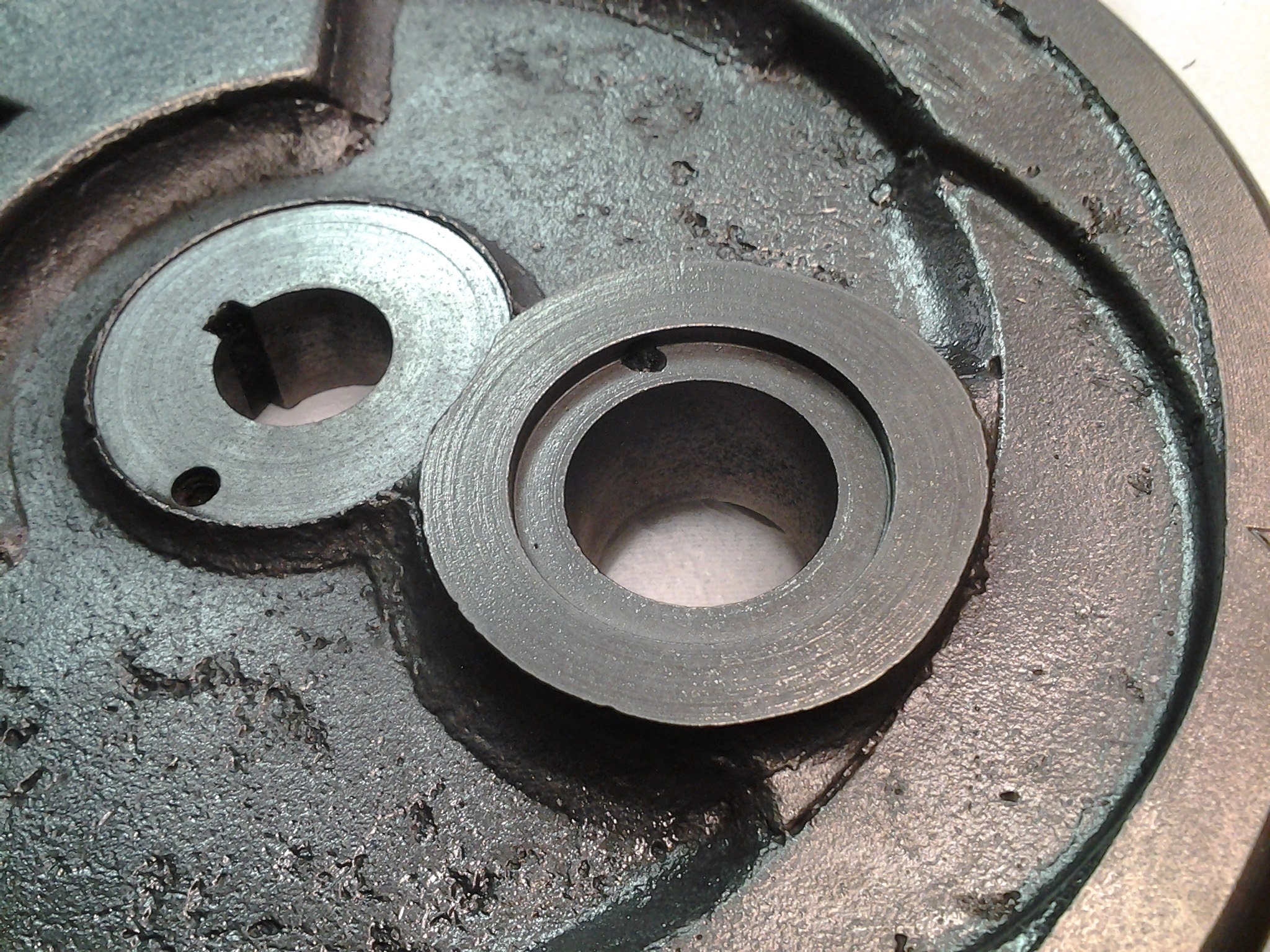
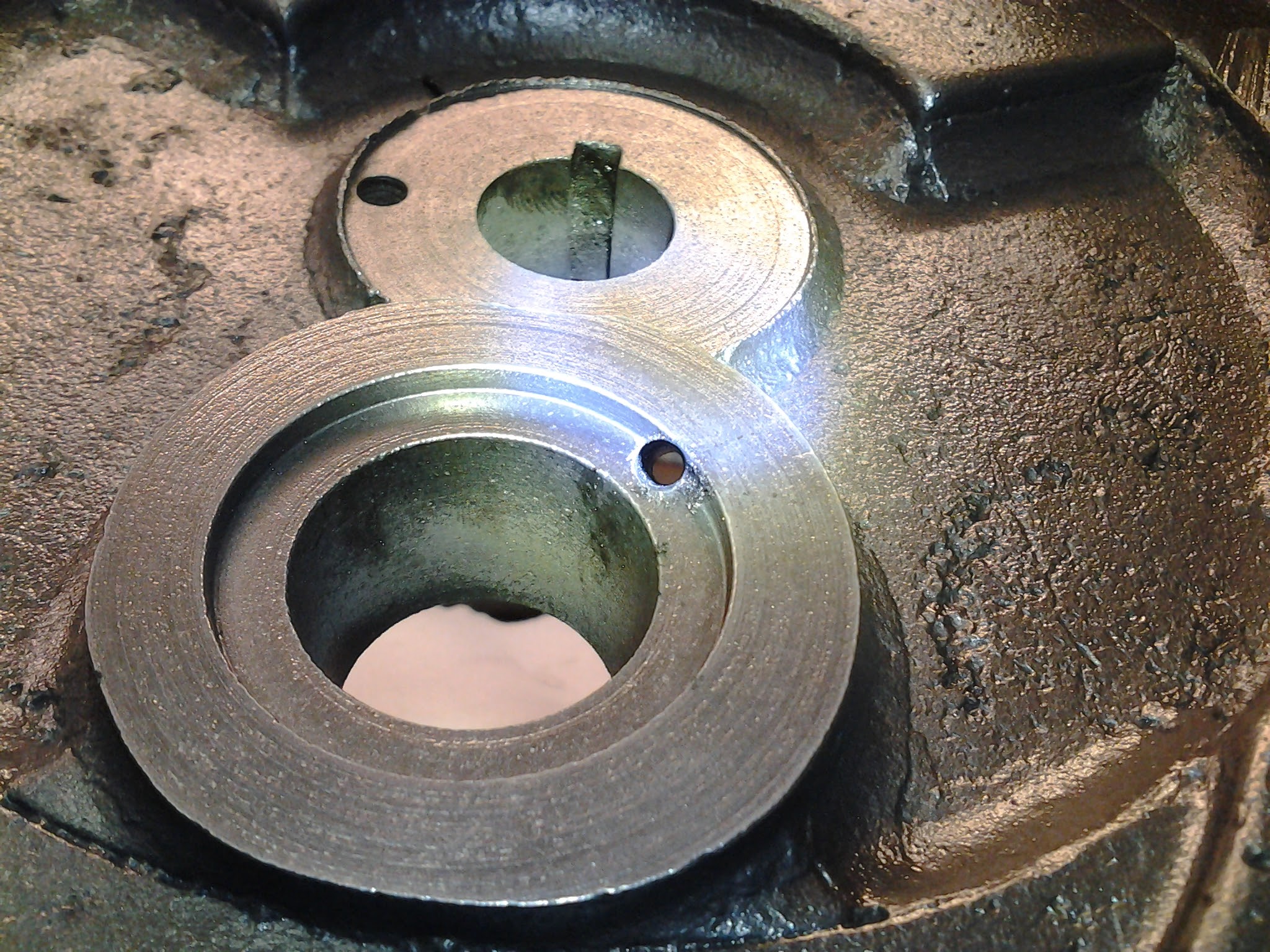
Ďalšie miesto, kde často dochádza k fatálnym chybám, je samotné ojničné ložisko. Mnohokrát sú poškodené samotné zotrvačníky v miestach, kde sú v kontakte s ojničným ložiskom. Na strane ložiska je zotrvačník ukončený žliabkom, v ktorom ústi spomínaný mazací kanálik. Odstredivou silou sa olej dostáva priamo k valčekom. Je to však aj miesto, kde sa dotýkajú ojnica so zotrvačníkom a rokmi používania, nedostatočným mazaním či nemenením už opotrebovaných súčiastok sa často veľmi poškodí aj zotrvačník.
Another place where fatal defect occur very often is the connecting rod bearing. Many times the flywheels are damaged in the places where they touch the connecting rod bearing. On the bearing side of the flywheel it is ended by a groove where the lubricating channel ends. Centrifugal force gets the oil directly to the rollers. But it is also a place where the connecting rod touches the flywheel and by years of use, insufficient lubrication or not changing the worn parts the flywheel gets damaged.
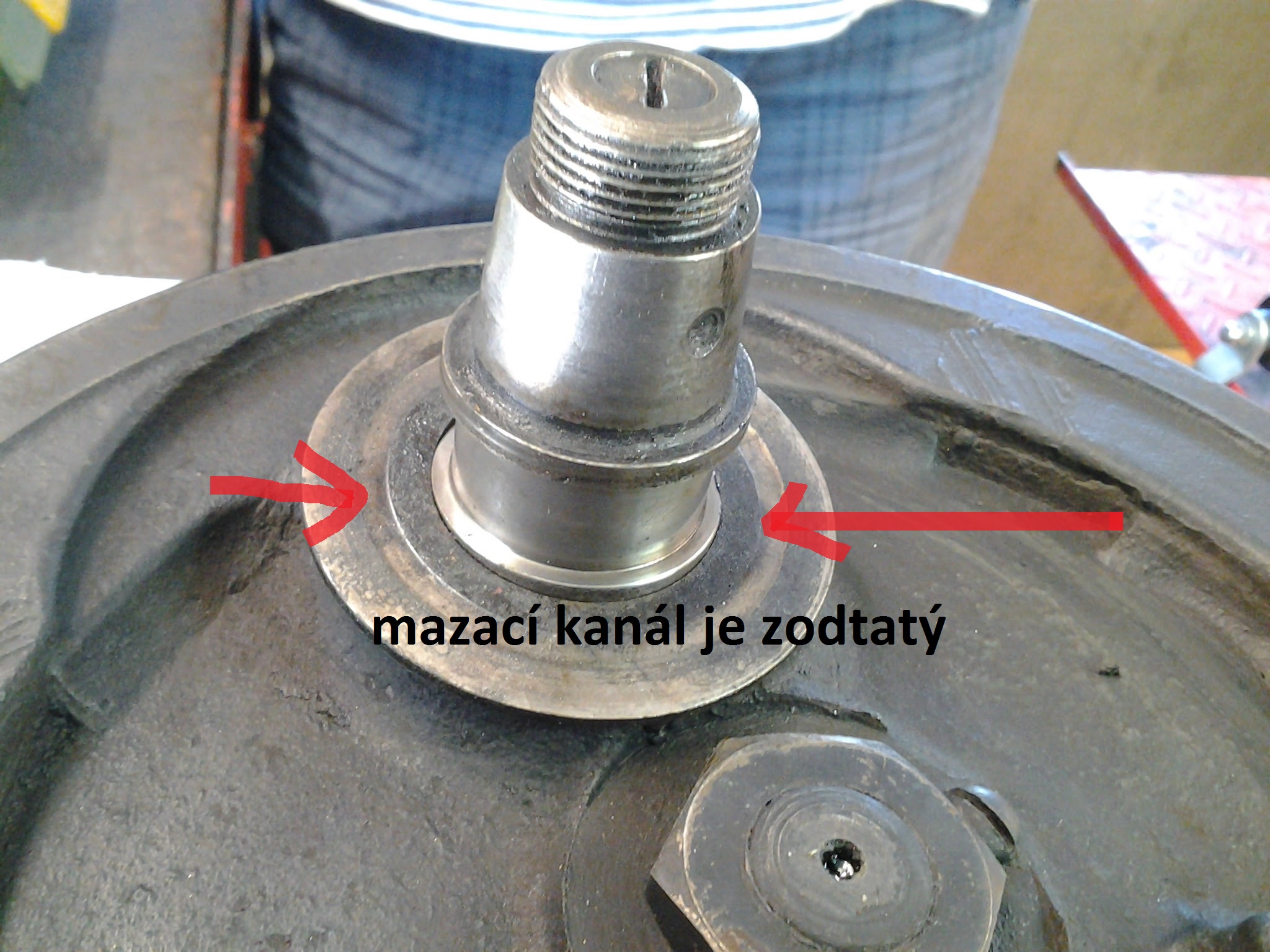
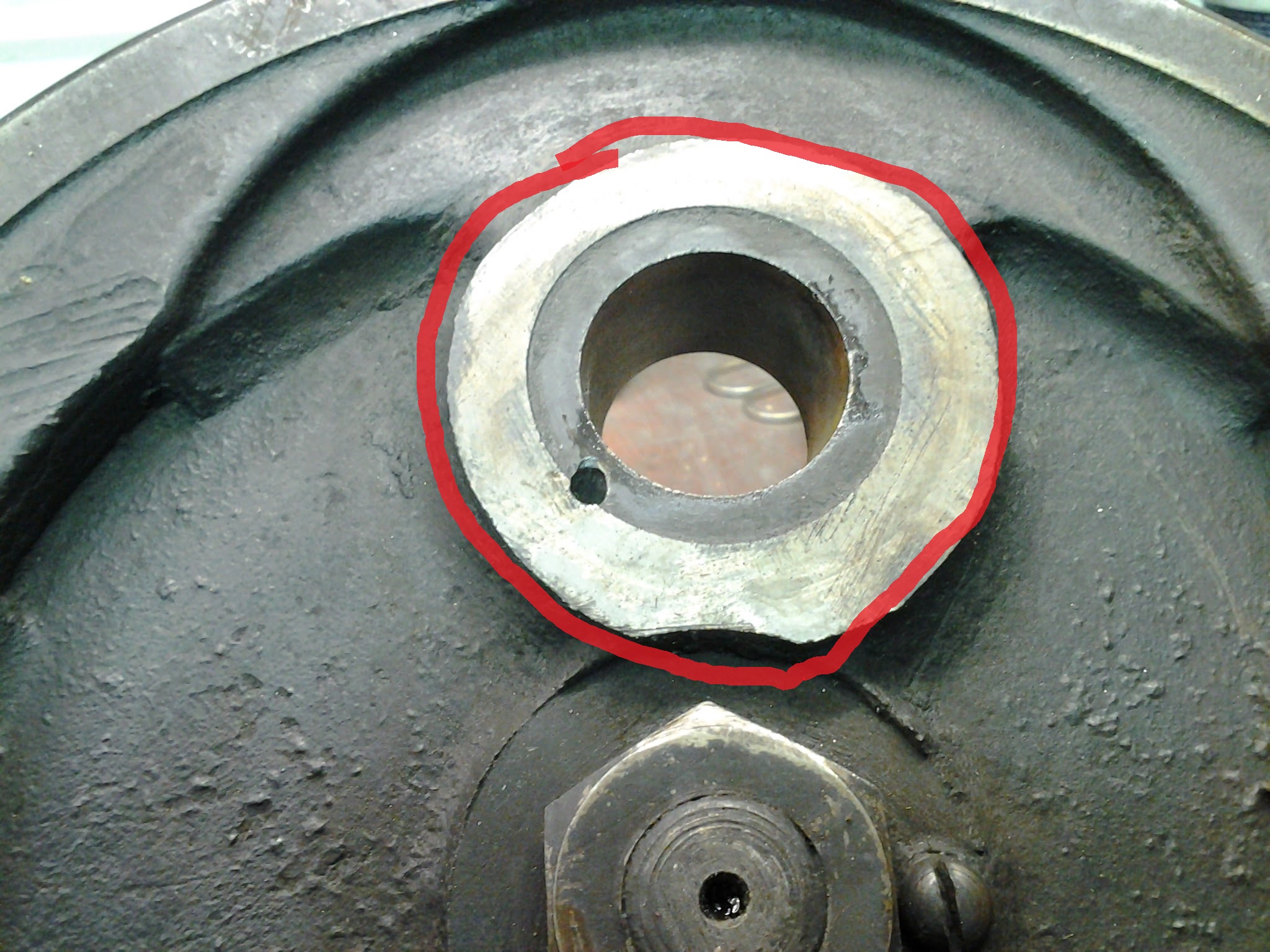
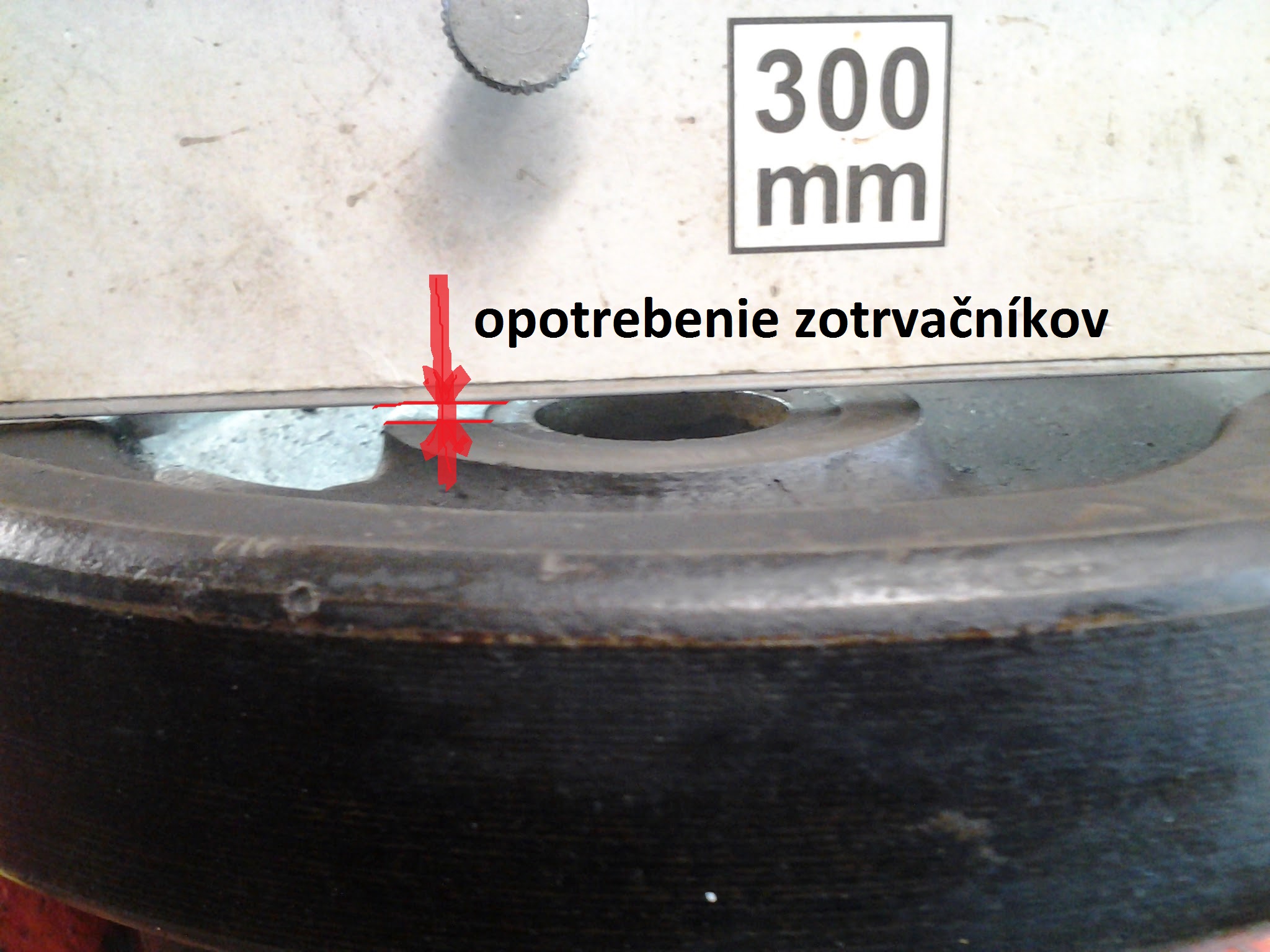
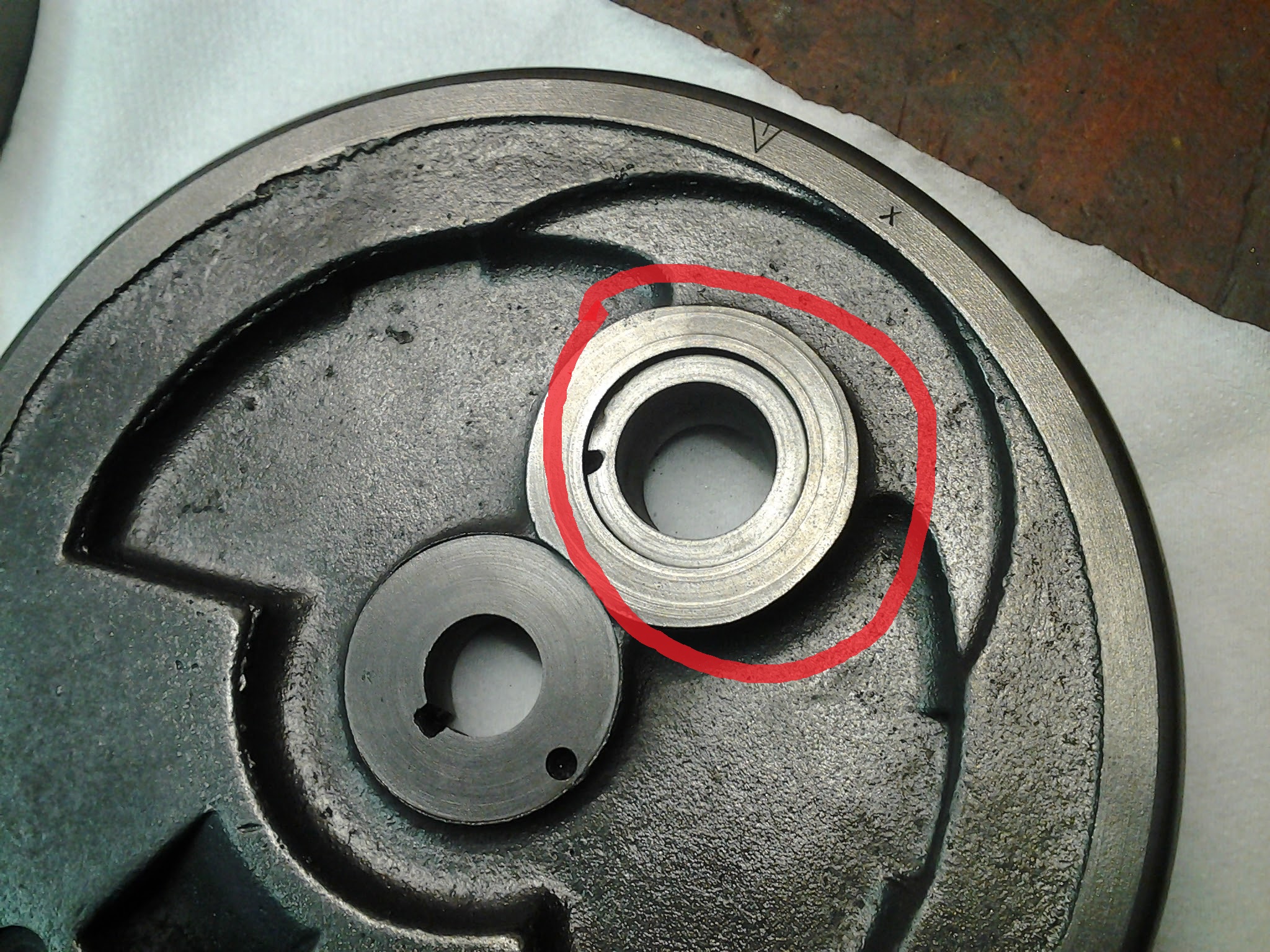
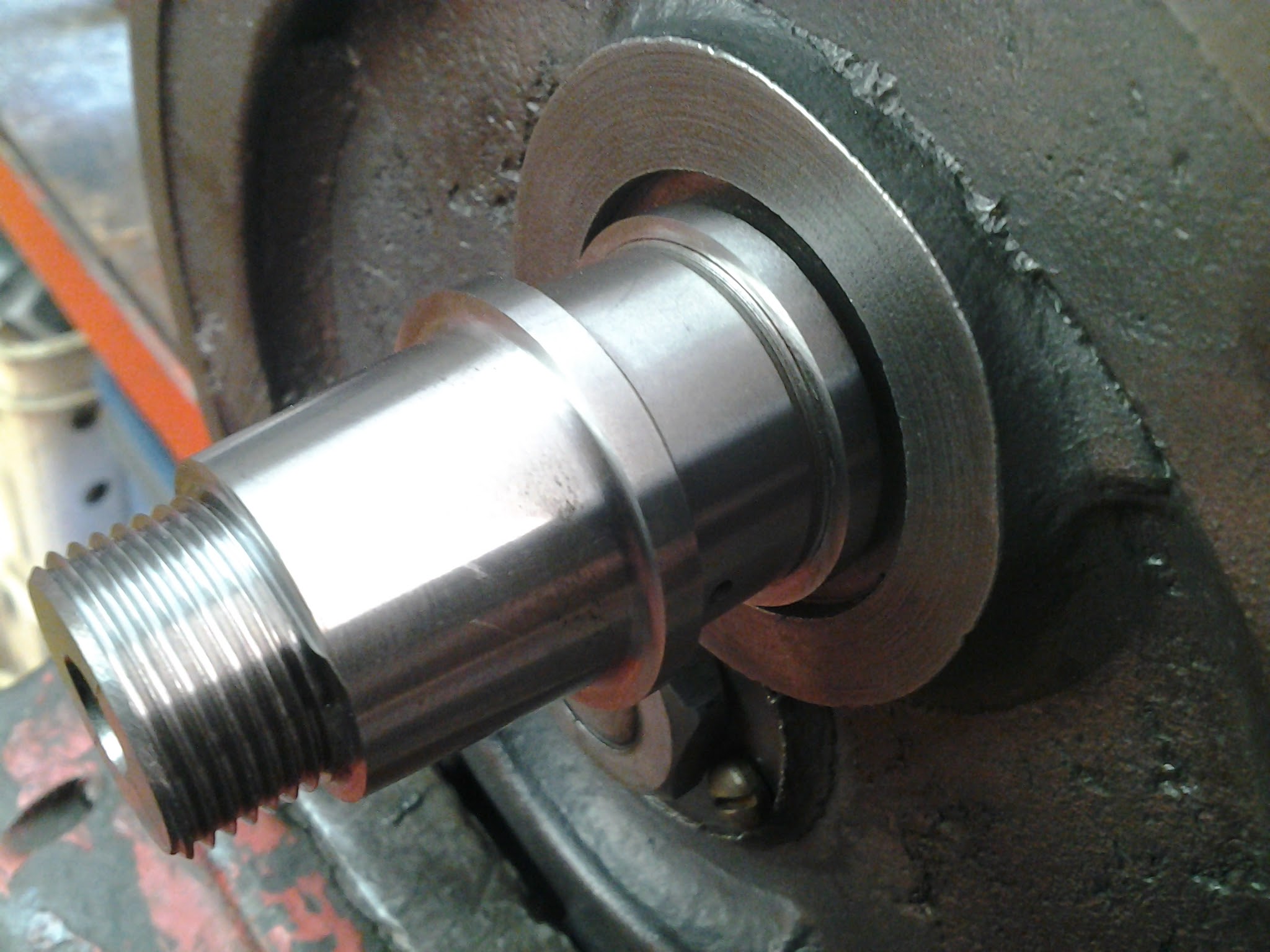
V minulosti sa tento problém riešil zrovnaním a vložením vymedzovacej podložky. Tento postup je však nesprávny. Podložka síce nahradí chýbajúci materiál a vymedzí pohyb ojnice, zabráni však úplne prístupu oleja a tak rapídne skráti životnosť motora . Nie, žeby sa motor zadrel hneď. Stále bude mazaný hmlovinou od zotrvačníkov. Je to však nedostatočné mazanie pre ojničné ložisko. Najlepším variantom opravy je nanesenie nového materiálu na zotrvačník. (jeho výška má byť do úrovne okrajov zotrvačníka) a vyrobenie nového žliabku pre sústredenie oleja. Ak je váš zotrvačník opotrebený do takej mery, že nepoznať okraje žliabku, použite mazací otvor ako bod na vnútornom okraji žliabku.
In the past this issue was solved by milling and inserting a spacer but this is not the right way to do it. The spacer may replace the missing material and reduces the free play of the connecting rod but totally blocks the oil ways and reduces the lifespan of the engine rapidly. The engine will not seize immediately. It still will be lubricated by the oily mist from the flywheels but this lubrication is not sufficient for the connecting rod bearing. The best way to do it is to apply the new material on the flywheel (its hight must reach the edges of the flywheel) and make a new groove for the oil to concentrate. If your flywheel is worn out to a point when no edges of the groove are visible, use the oiling hole as a point on the inner edge of the groove.
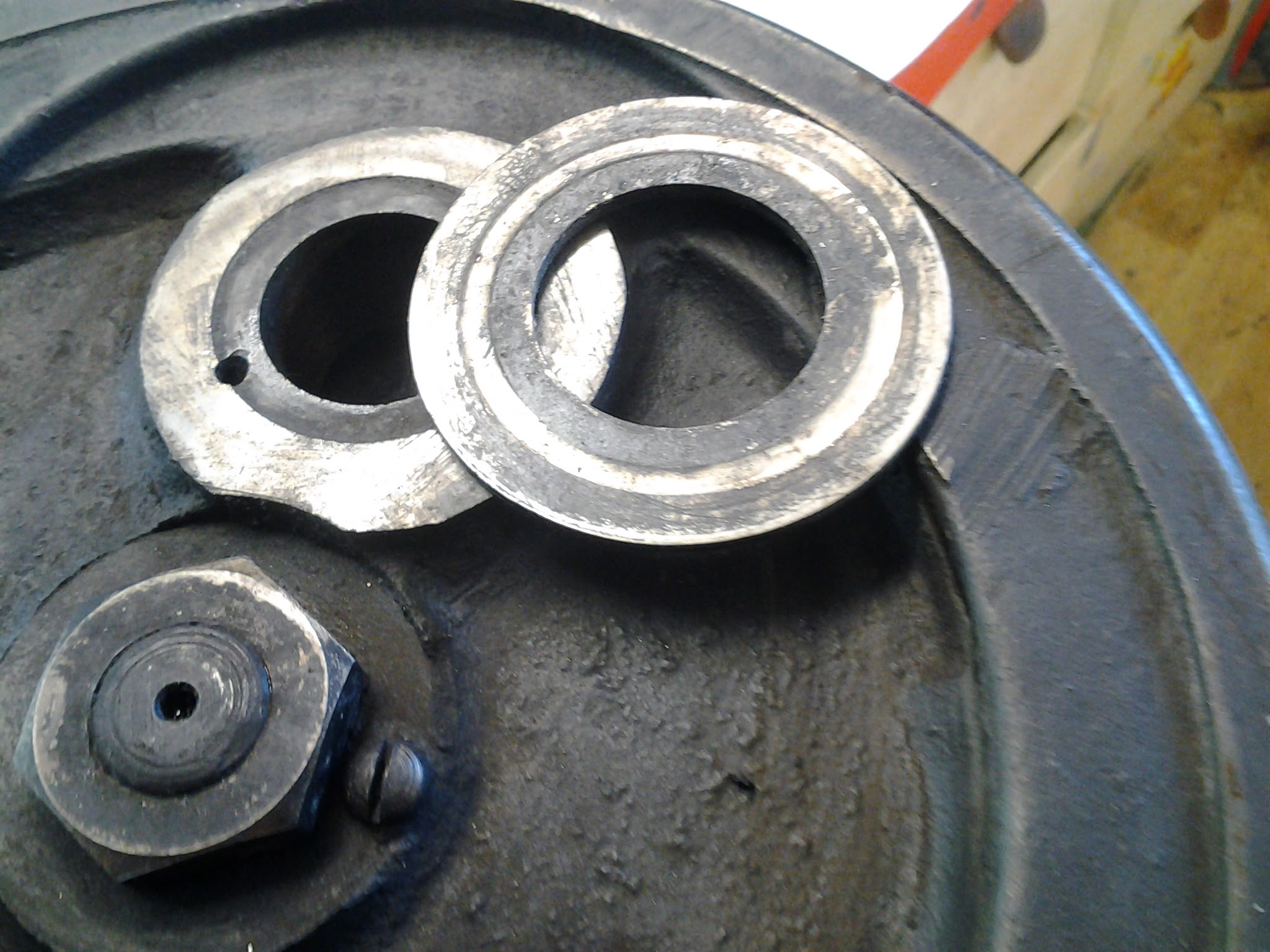
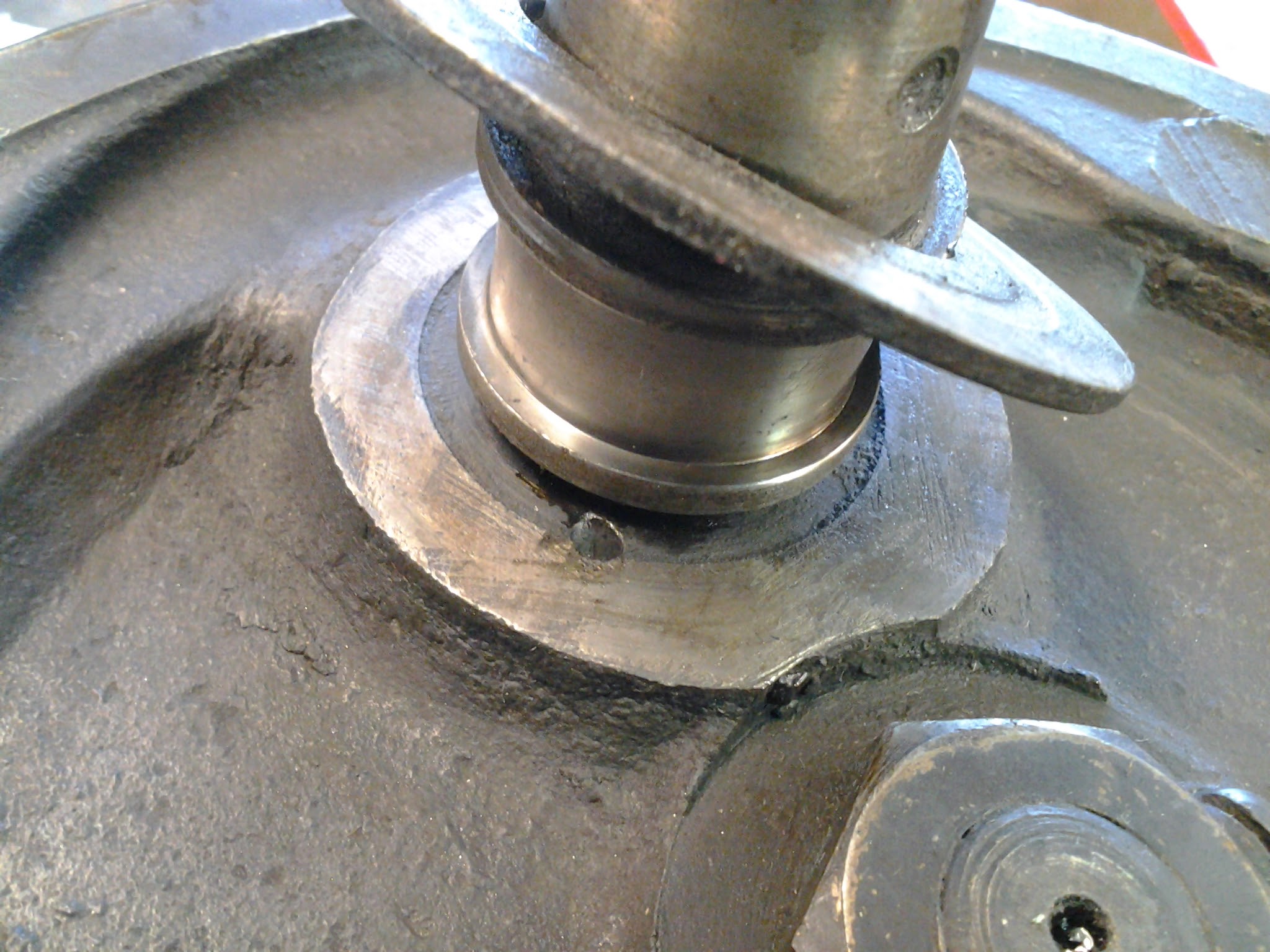
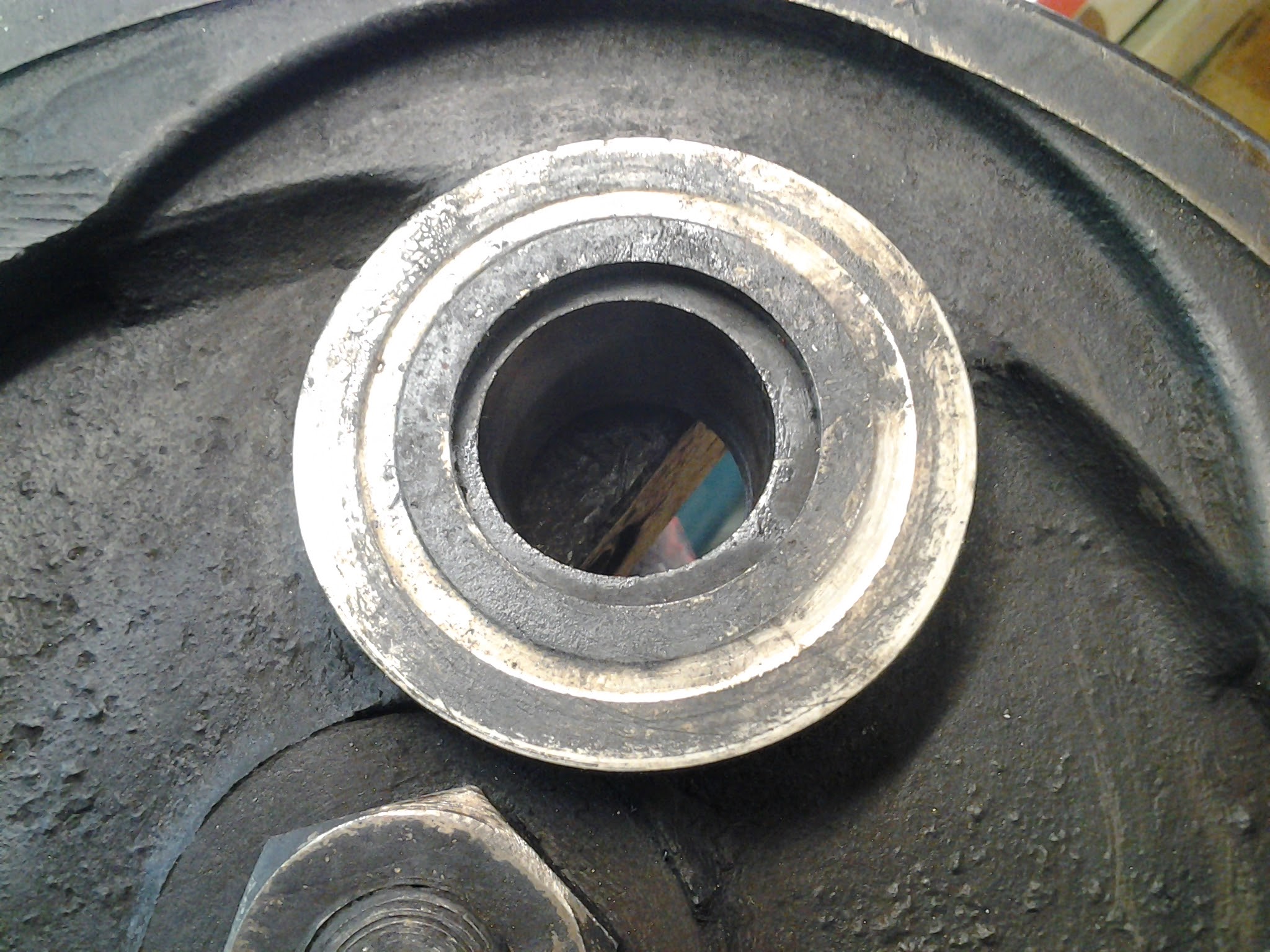
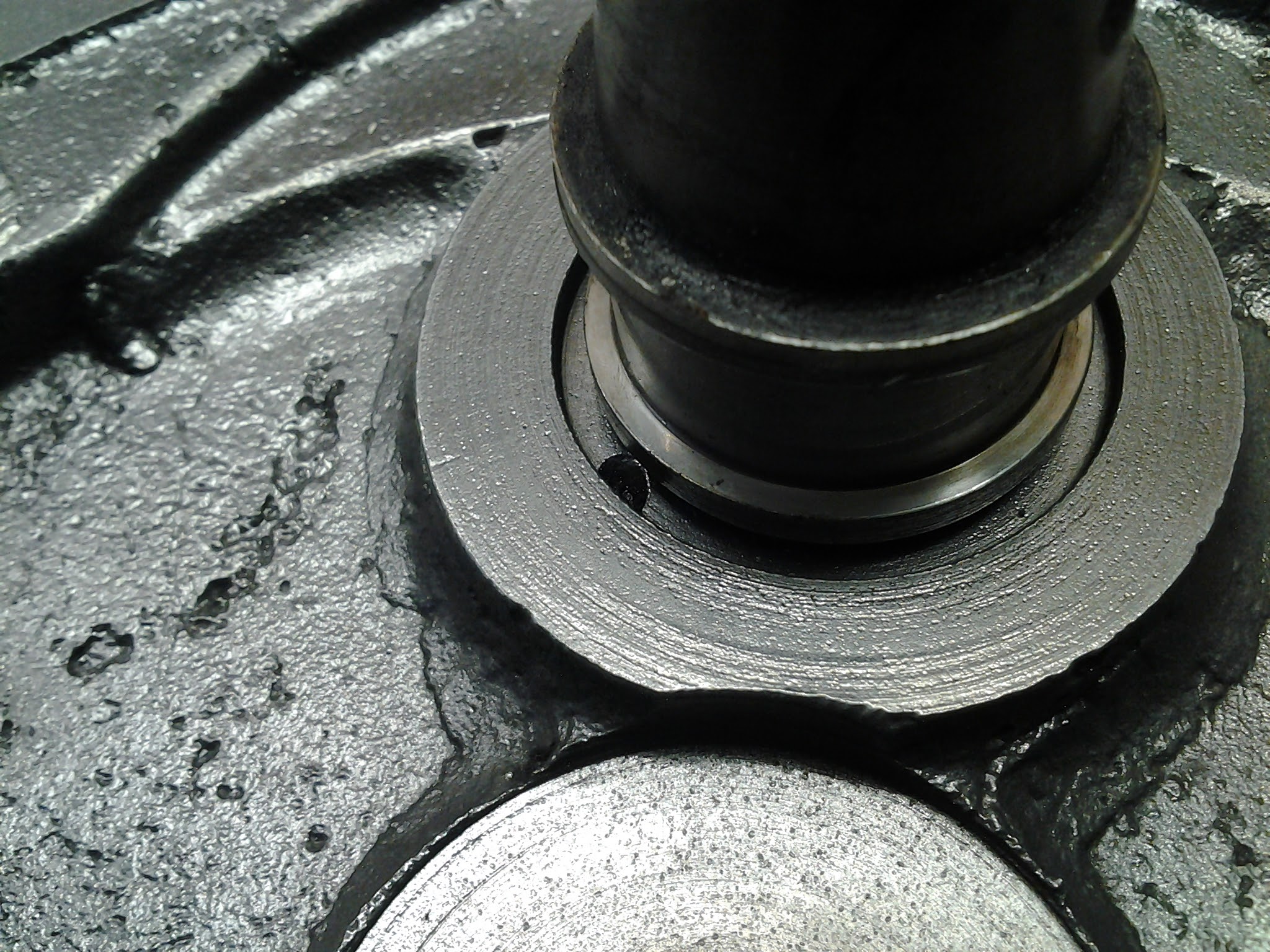
Cesta oleja ďalej pokračuje cez ojničné ložisko do druhého zotrvačníka. Samozrejme treba oba zotrvačníky opraviť rovnakým spôsobom. Aj tu je mazací kanálik. Je však navŕtaný v smere otáčania motora a teda odvádza prebytočný olej v smere od ojnice k žliabku na druhej strane motora.
The journey of the oil continues through the connecting rod bearing to the second flywheel. Of course it is necessary to repair both flywheels the same way. Even here we have the oiling hole. This time is is drilled in a direction of the engine movement and so it drives the surplus oil in direction from the connecting rod to the groove on the other side of the engine.
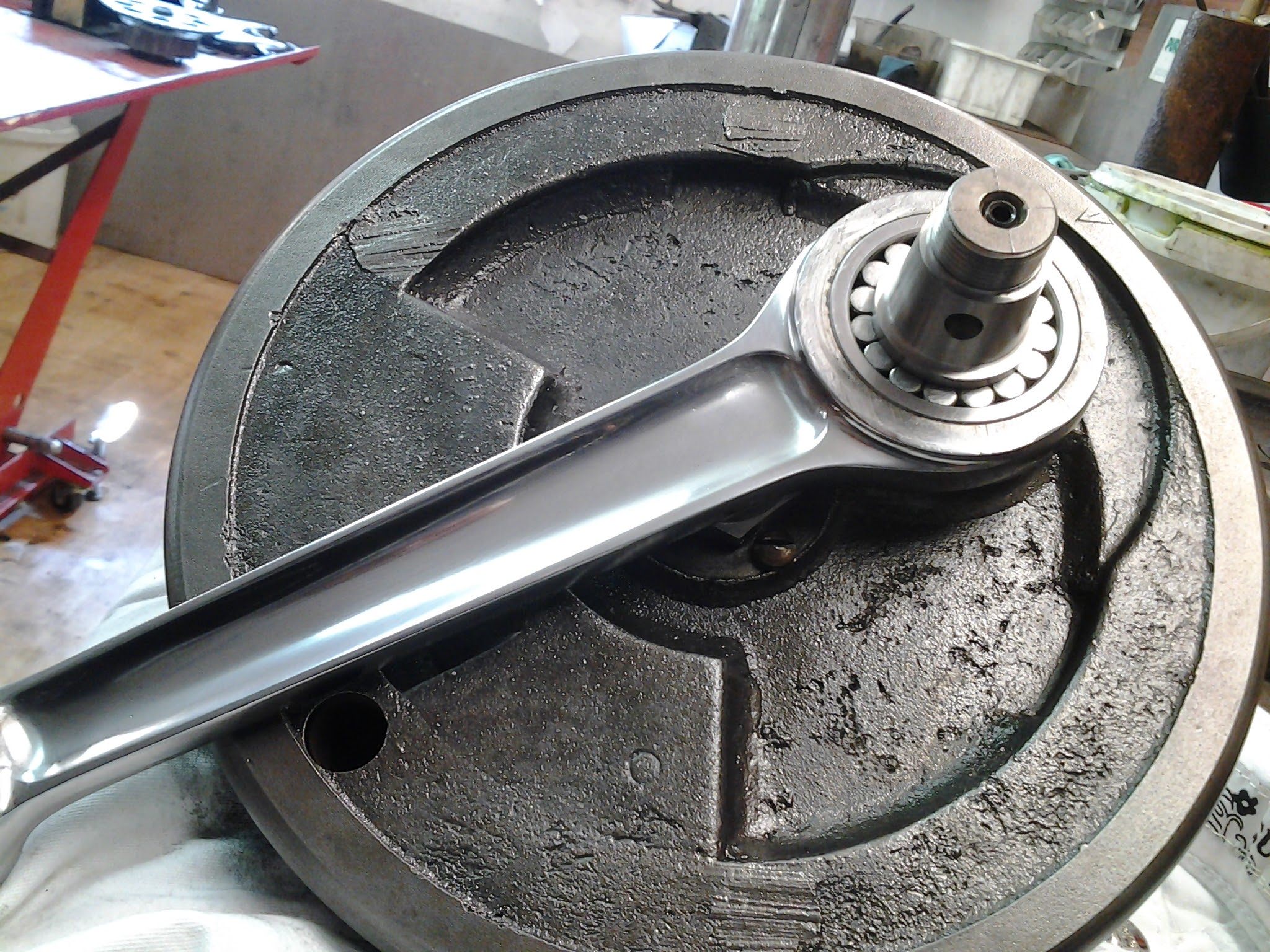
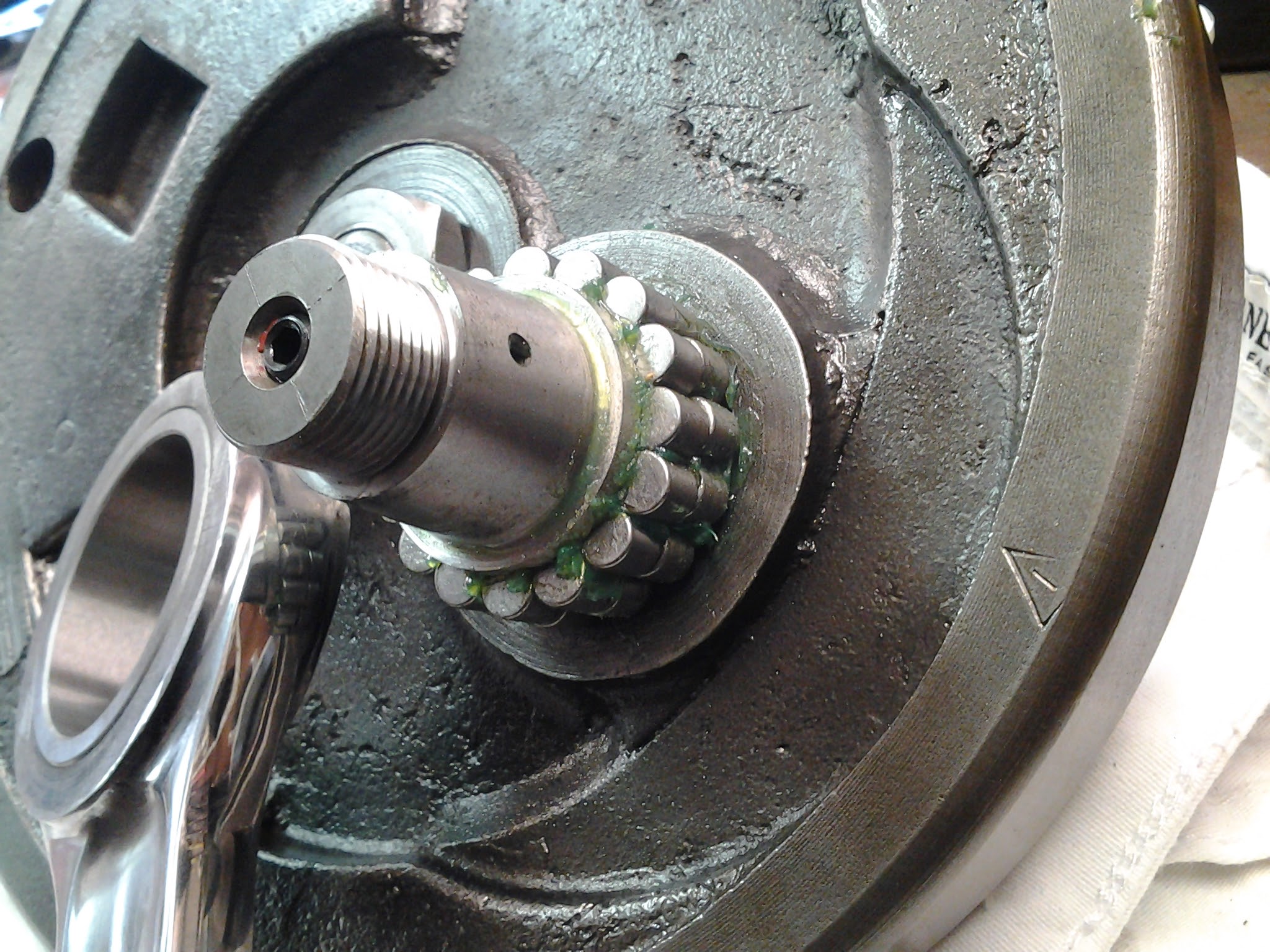
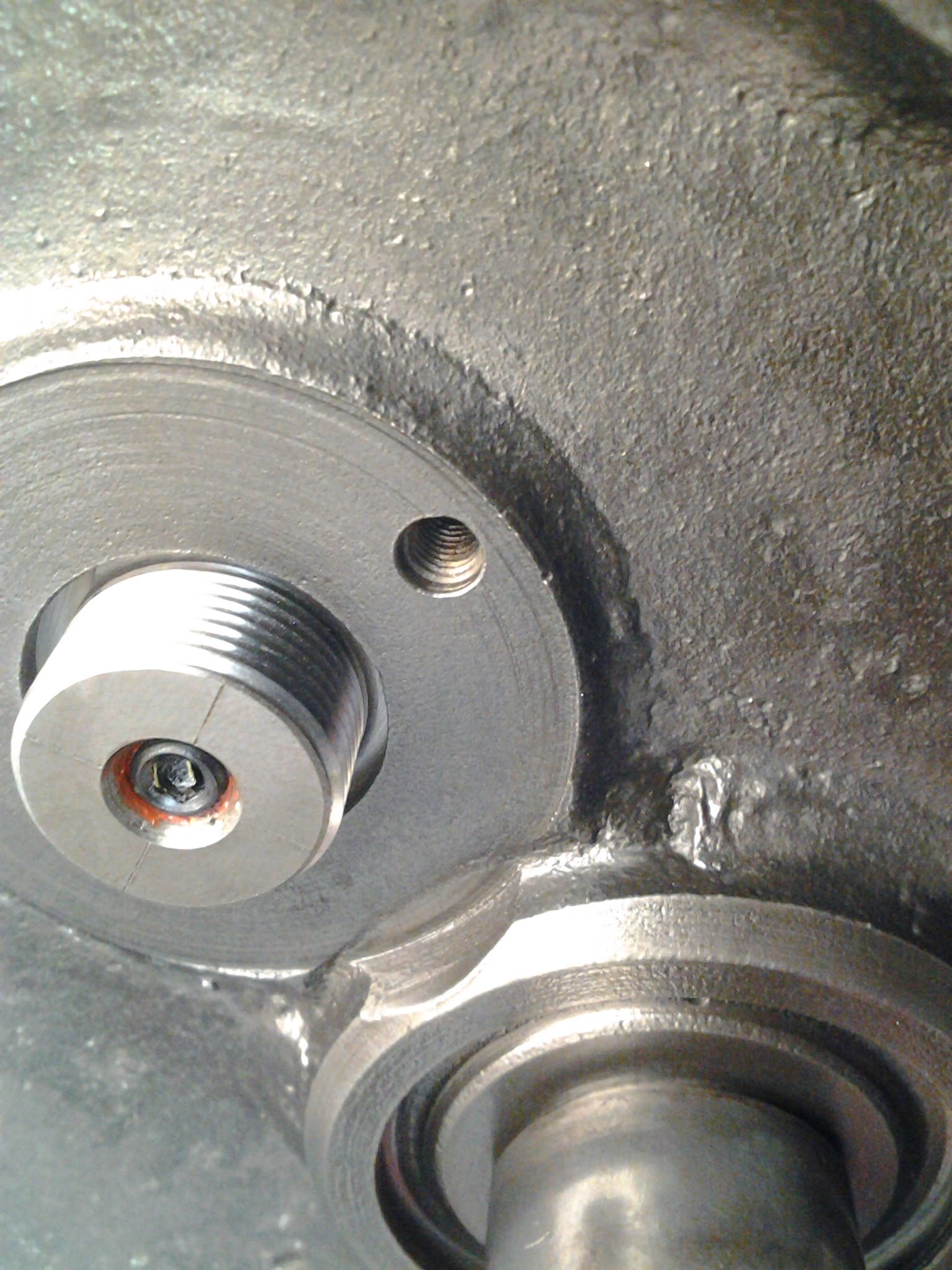
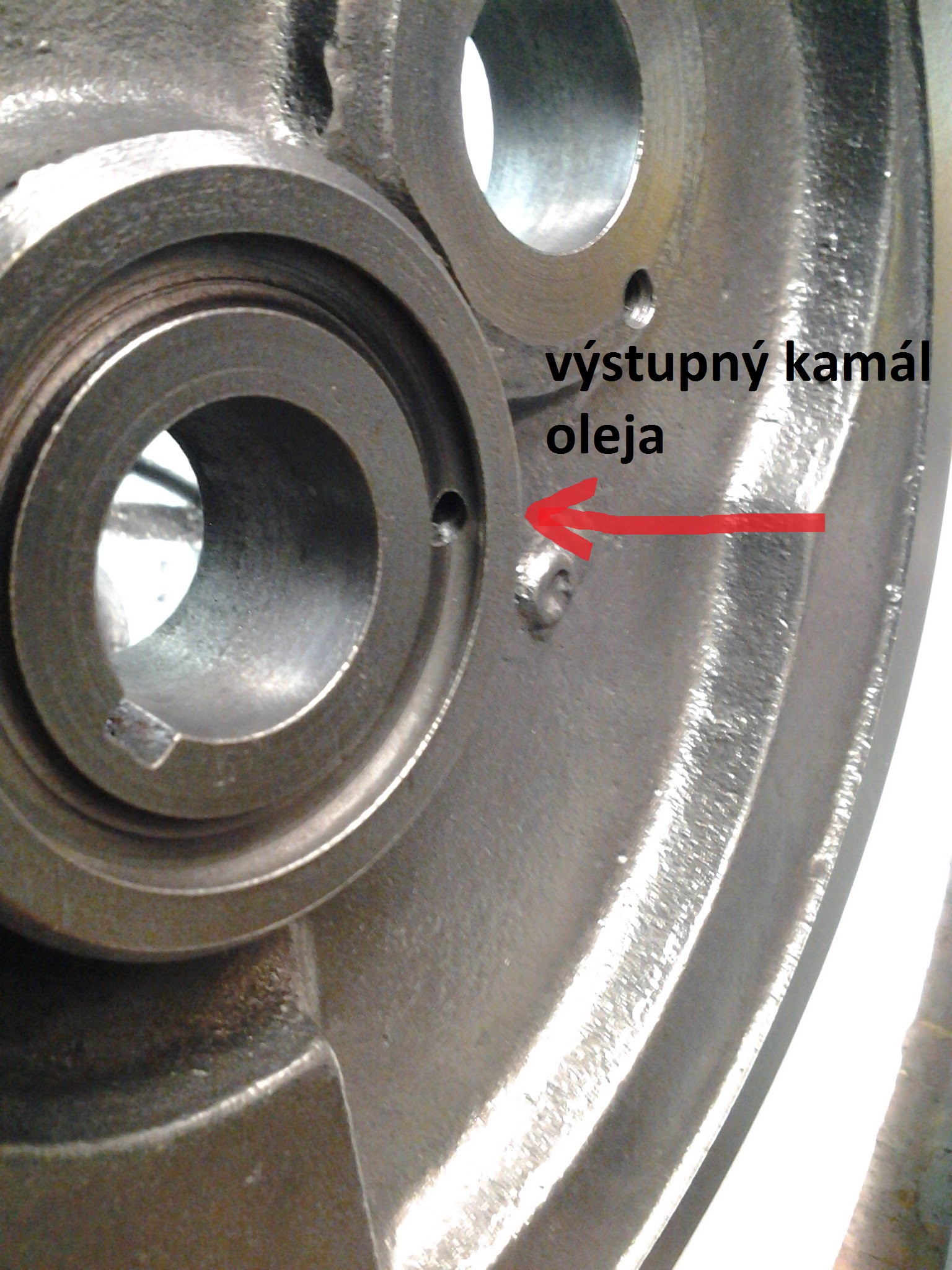
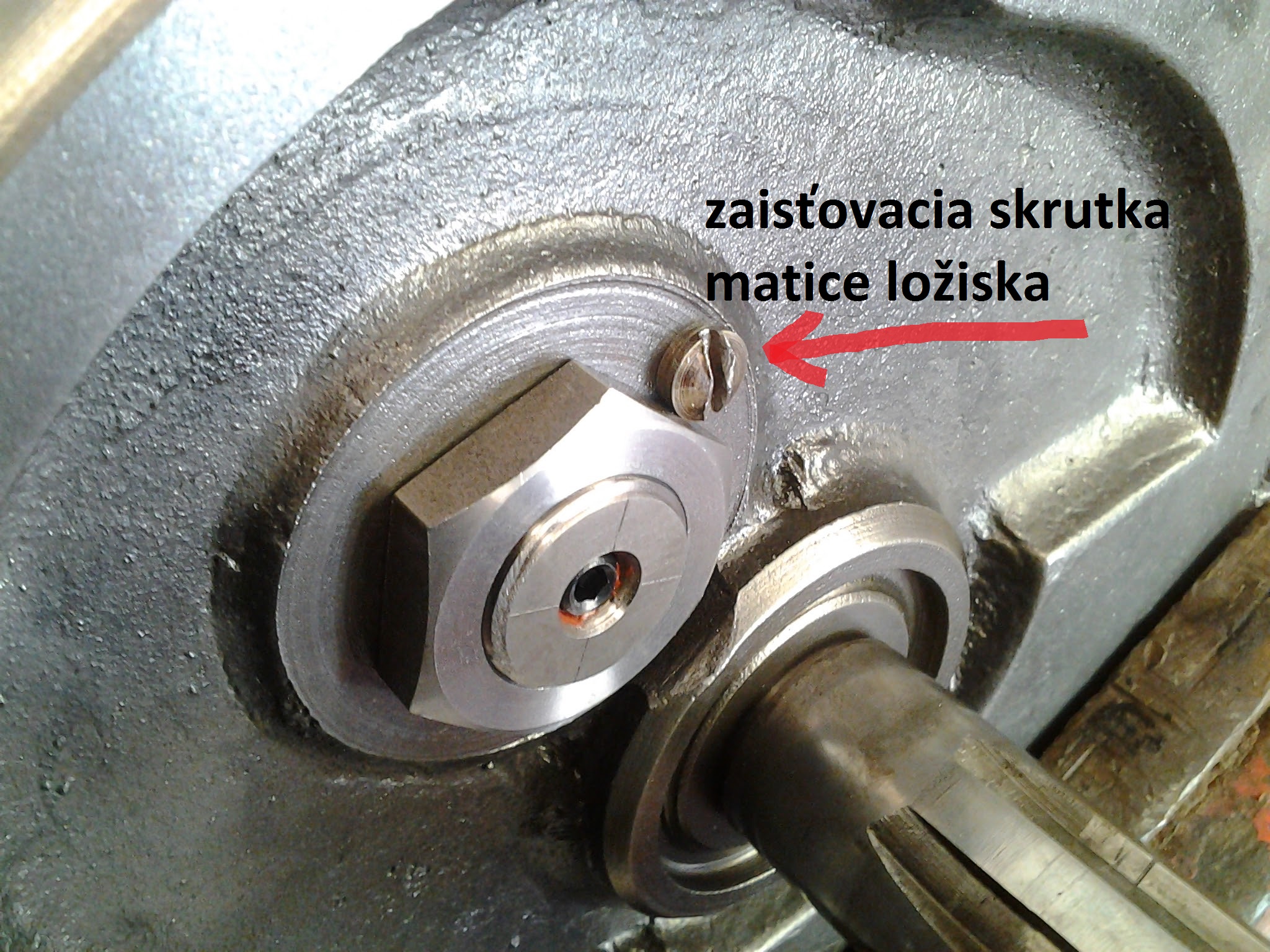
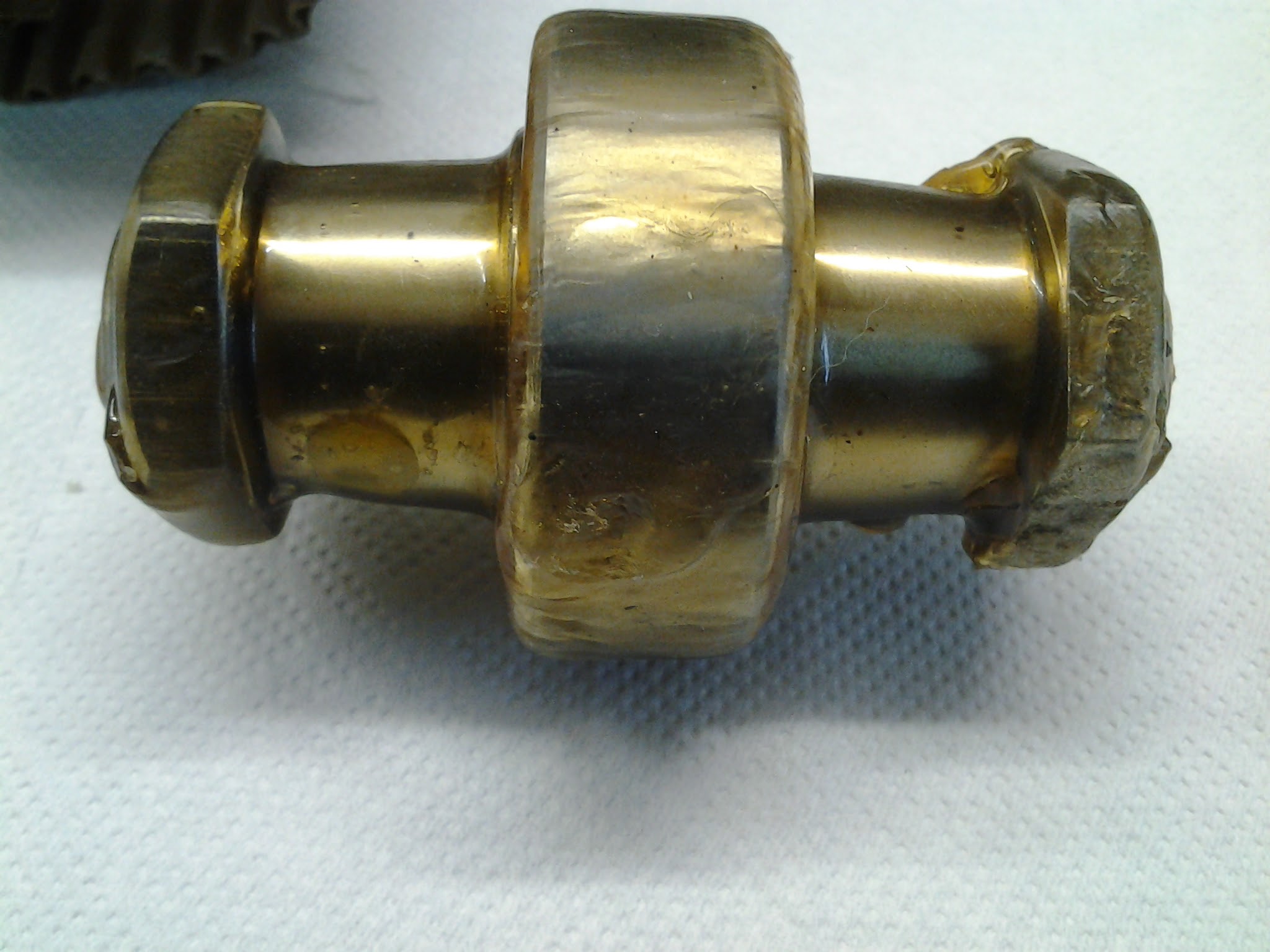
Teda k hlavnému ložisku kľuky na strane primárneho rozvodu. Prebytočný olej je ďalej rozháňaný zotrvačníkmi na dodatočnú hmlovinu, ktorá maže cez systém zberných žliabkov púzdro na vačke aj na kľuke (strana od vačky). Ďalej cez jednostranné výdychy domazáva samotnú vačku s ústrojenstvom rozvodu. Je preto dôležité aby zotrvačníky neboli leštené. Drobné nerovnosti od výroby pomáhajú lepšie rozháňať olej na mastnú hmlovinu. Prebytočný olej si motor so stratovým mazaním odfúkne cez jednosmerný ventil na primárnu reťaz.
That means to the main crankshaft bearing on the side of the primary drivetrain. Surplus oil is then spread on by flywheels to an oily mist which lubricates the casings of the camshaft and crankshaft (camshaft side) through a system of collecting oil grooves. Further on through one sided breathers it lubricates the camshaft and the timing mechanism. Therefore it is necessary that the flywheels are not polished. Slightly rough surface helps the oil to be spread the oil to the form of oily mist. The surplus oil is blown off by the engine with a total loss lubrication through the PCV valve onto a primary chain.
Prajeme veľa šťastných kilometrov za Slovenský Arielklub
Karol Burger a Patrik Lehotský.
We wish you many happy miles. For Slovak Ariel club
Karol Burger and Patrik Lehotský
Translated by Rastislav Chmelár
Komentáre
Pridať komentár